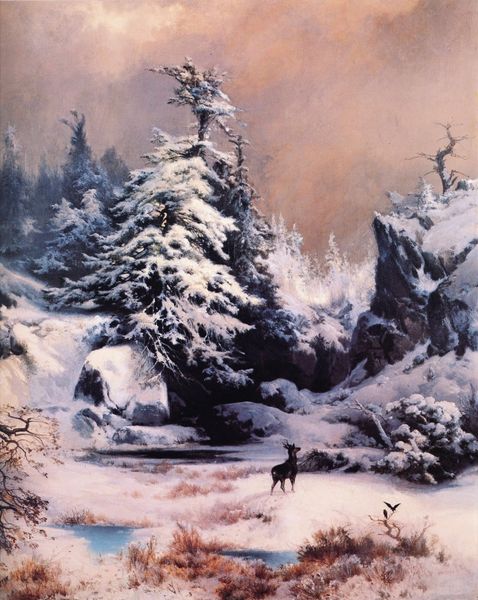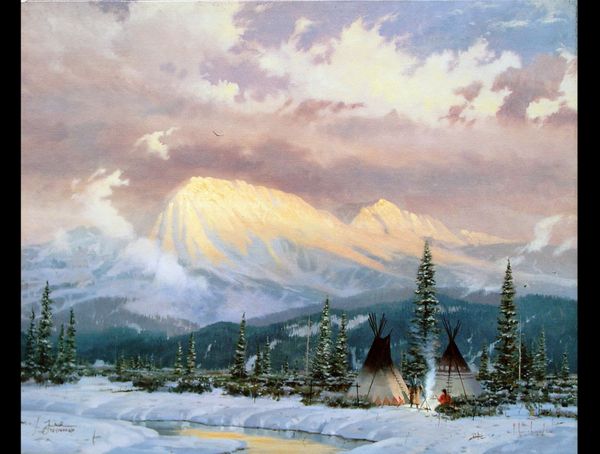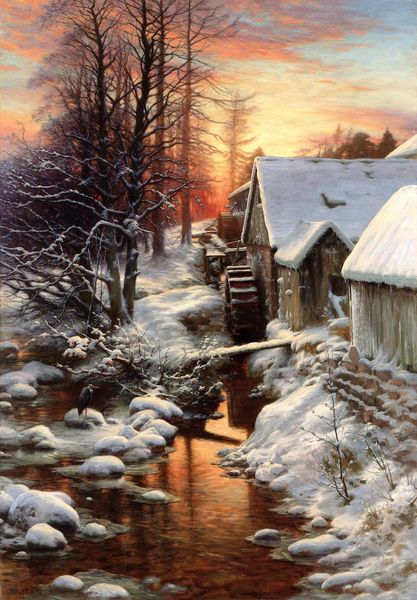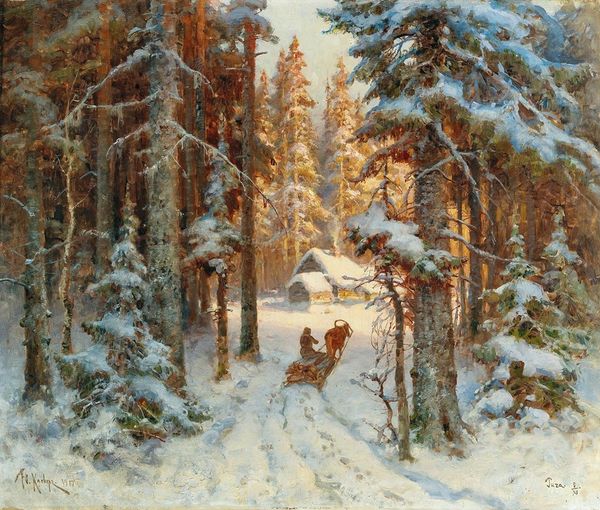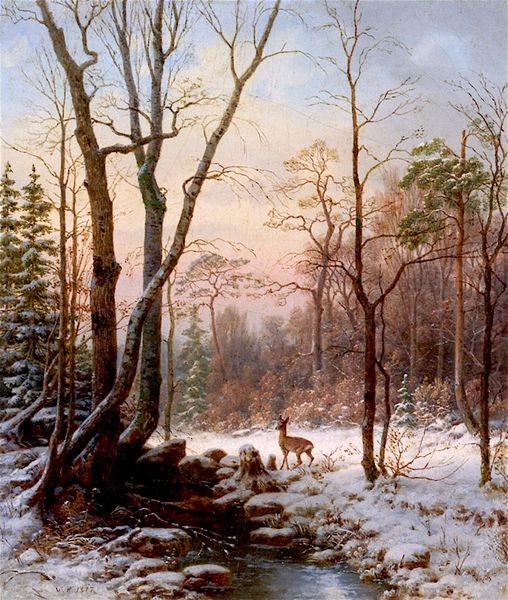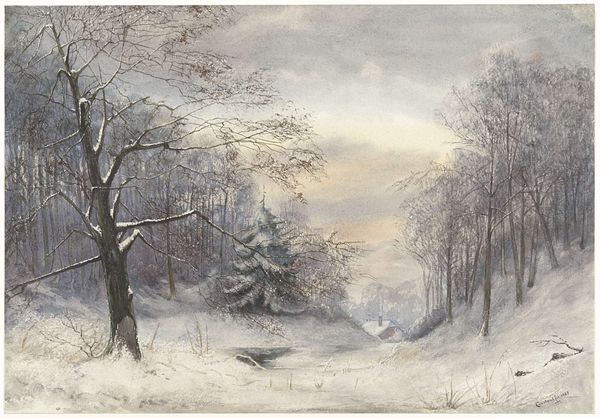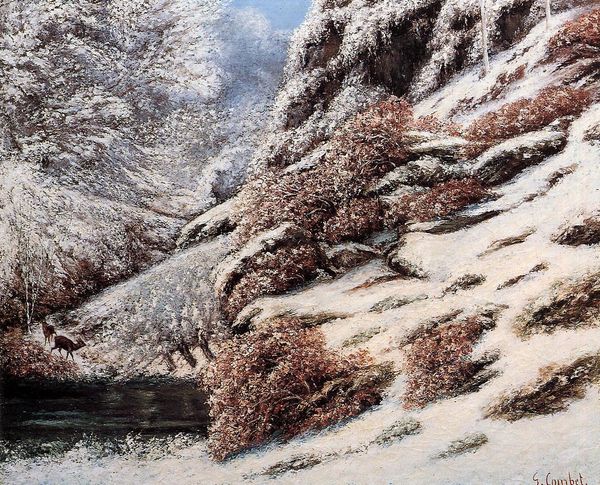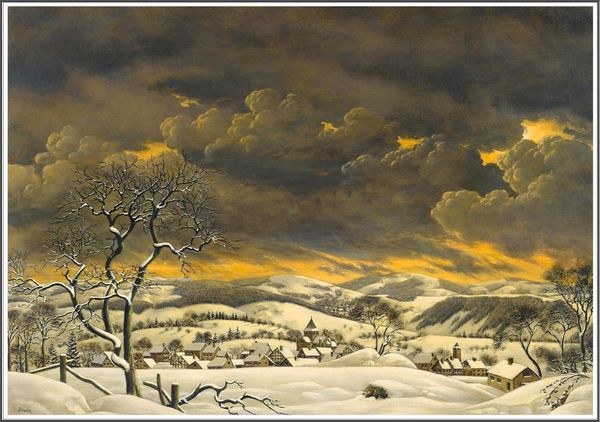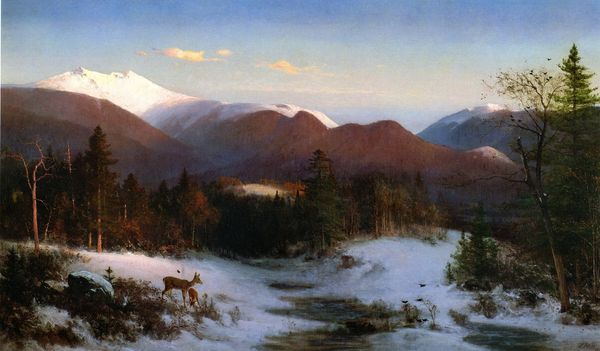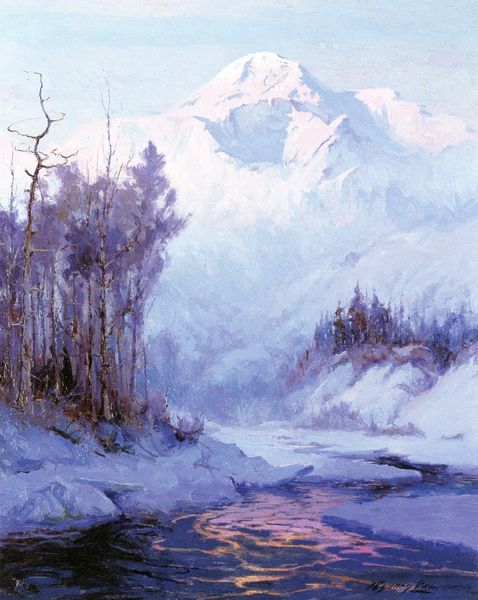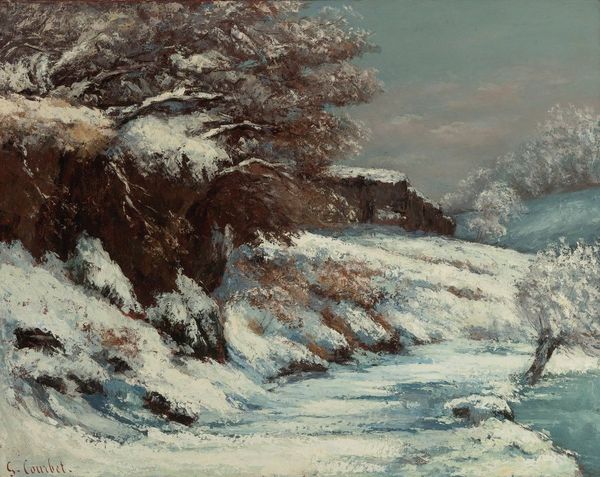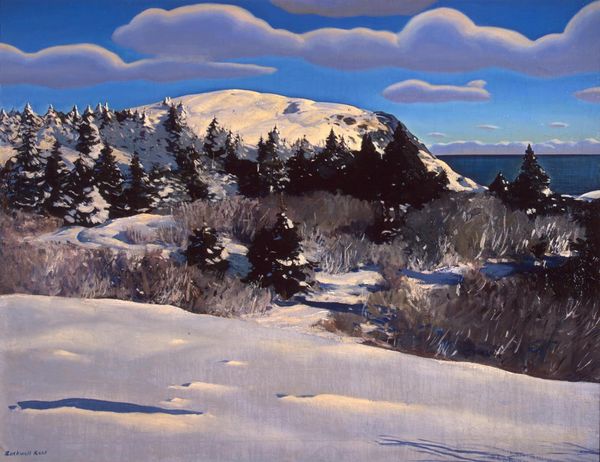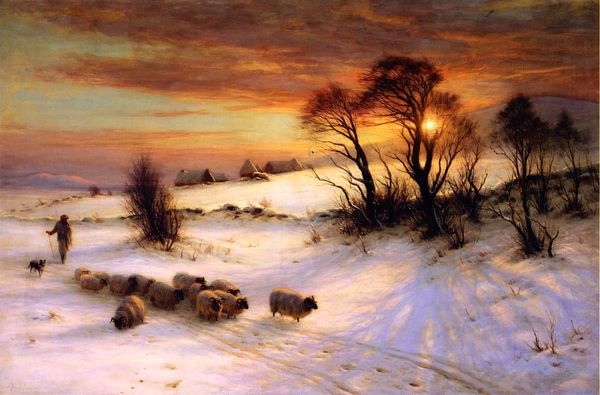
painting, plein-air, oil-paint, impasto
#
tree
#
snow
#
sky
#
painting
#
plein-air
#
oil-paint
#
landscape
#
winter
#
impasto
#
romanticism
#
mountain
#
cloud
#
seascape
#
natural-landscape
#
fog
#
watercolour illustration
#
naturalism
#
nature
#
mist
Copyright: Public domain
Editor: "Winter Afternoon" by Hans Gude, painted in 1847, is so captivating. The blanket of snow looks thick and heavy, yet the scene glows with a warmth that belies the chill. What draws your attention when you look at this landscape? Curator: For me, it’s the very palpable materiality of the scene that speaks volumes. Consider the impasto technique, how Gude has built up layers of oil paint to create texture, mimicking the density of snow and the rough bark of the trees. How do these materials interact with each other and what does this say about man’s place in nature at this time? Editor: That’s a great point, I hadn’t thought about the literalness of the materials. Curator: And think about the social context. This wasn’t simply about painting a pretty scene. Gude, working in the plein-air tradition, was engaging with nature directly, making observations about a harsh landscape that required particular forms of labour and material resources to survive. Note also the two men with what appear to be wooden skis. These aren’t merely figures in a landscape but underscore humanity's ongoing dialogue with its environment and how material invention enabled such interaction. Editor: So it’s less about a romantic ideal and more about a working relationship with nature? Curator: Precisely! It speaks to the tangible effort required to navigate this environment and a developing, class-related activity as ski making gains prominence. These elements were crafted in workshops, bought, and then physically placed against this backdrop. It encourages questions around consumerism and privilege that are just under the surface. Editor: That definitely shifts my perspective. Seeing the artwork as a record of labour and resources, rather than just a scenic view, adds so much depth. Thank you! Curator: Indeed. Shifting away from a purely aesthetic reading allows us to explore wider cultural values that surround its production.
Comments
No comments
Be the first to comment and join the conversation on the ultimate creative platform.
